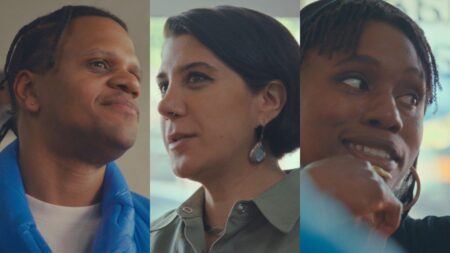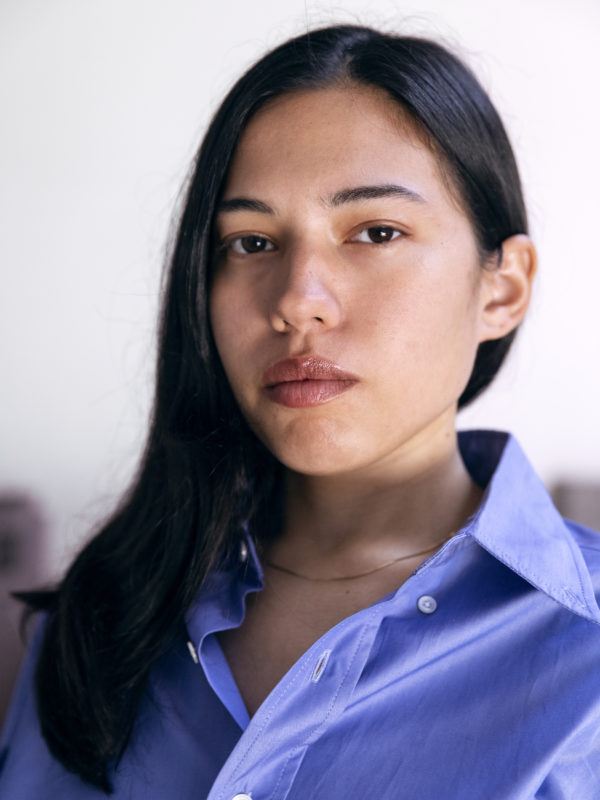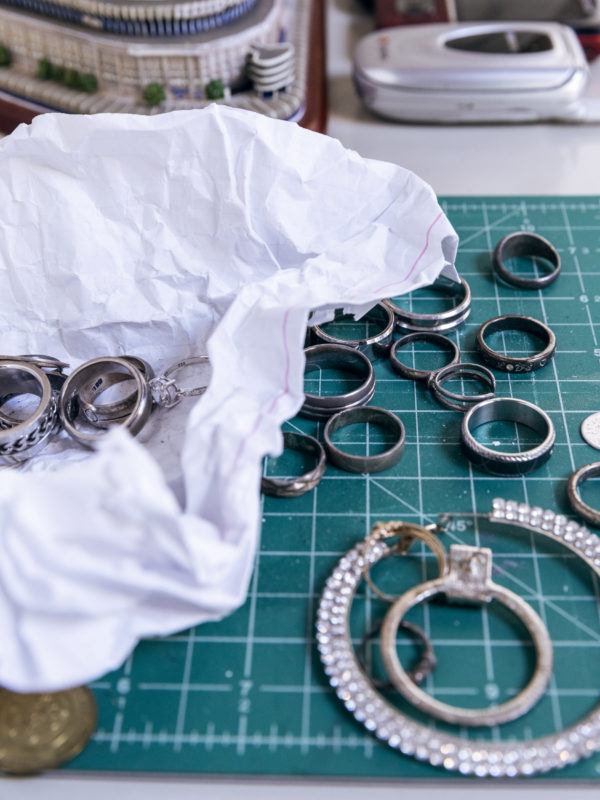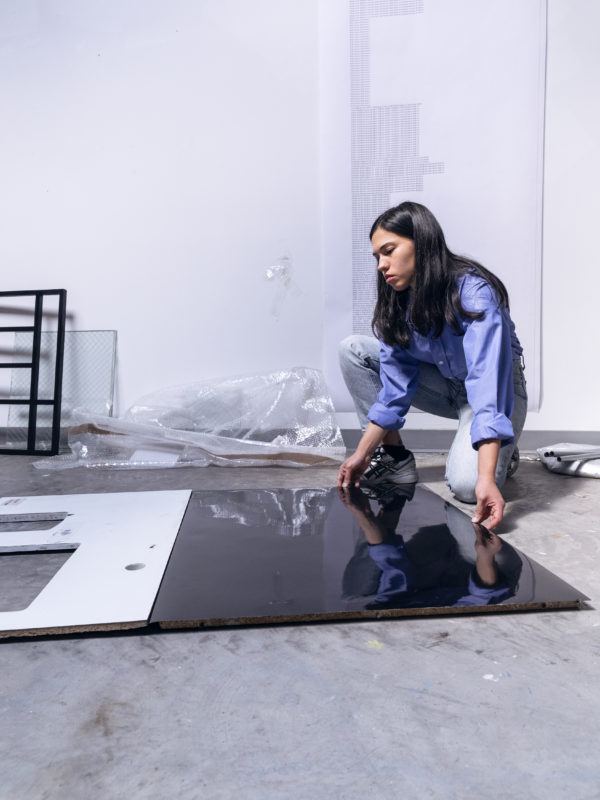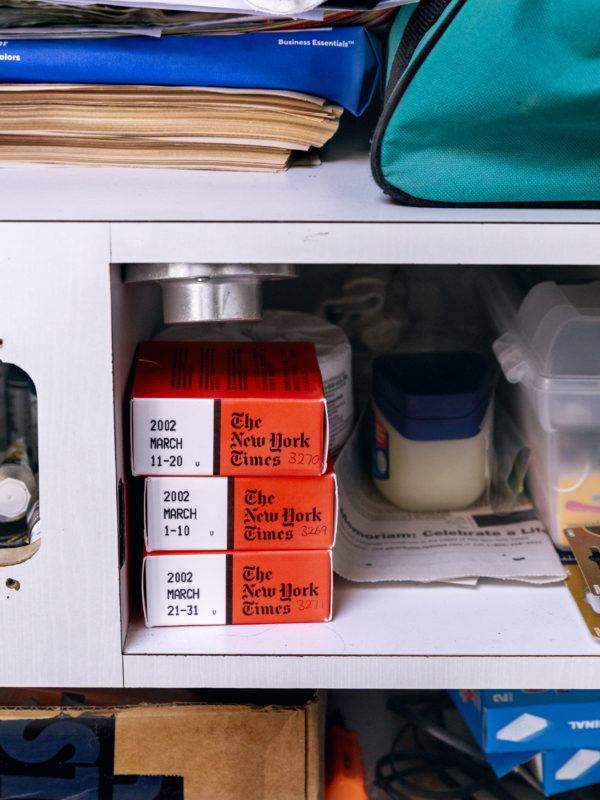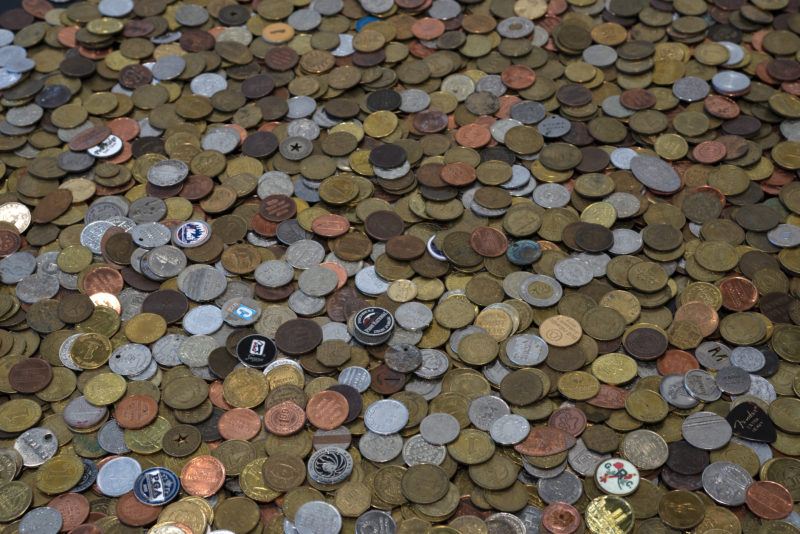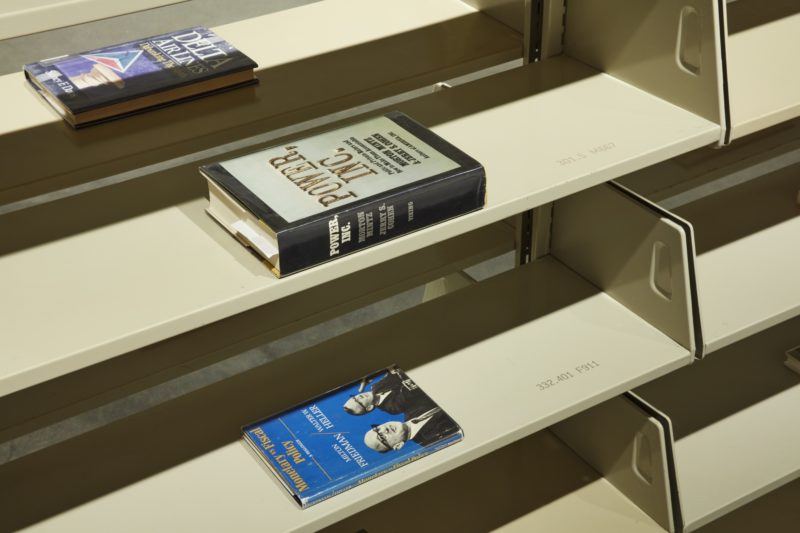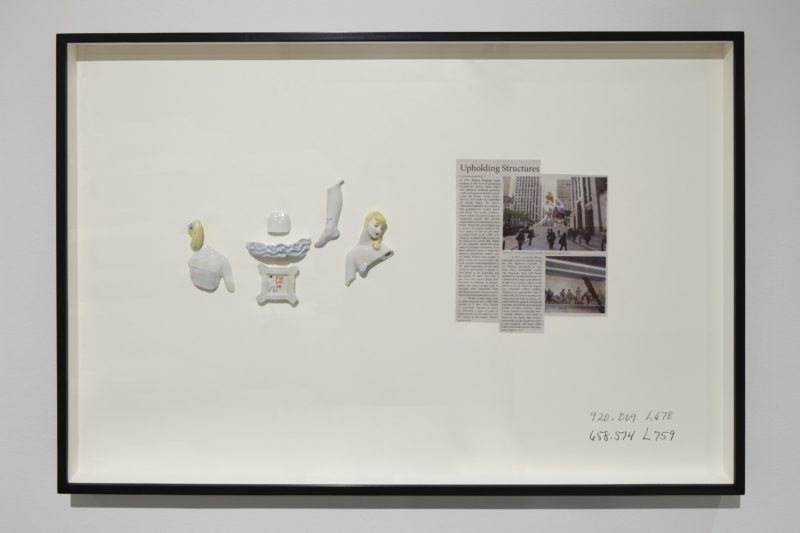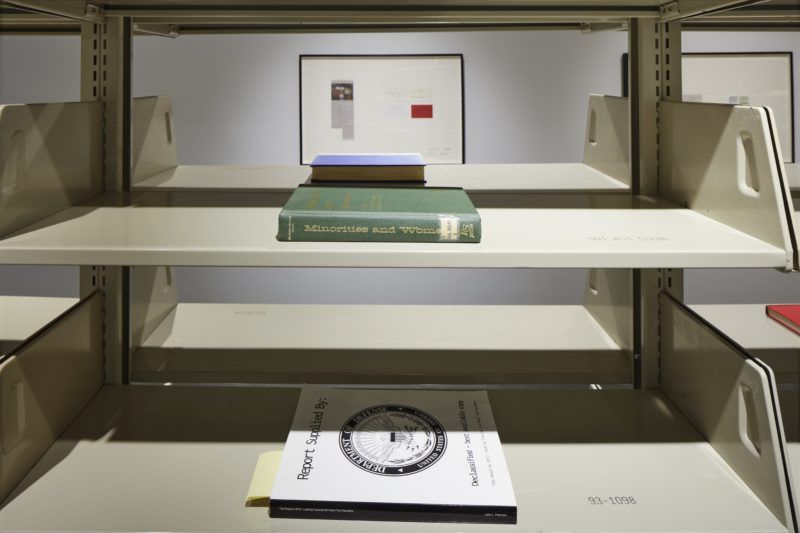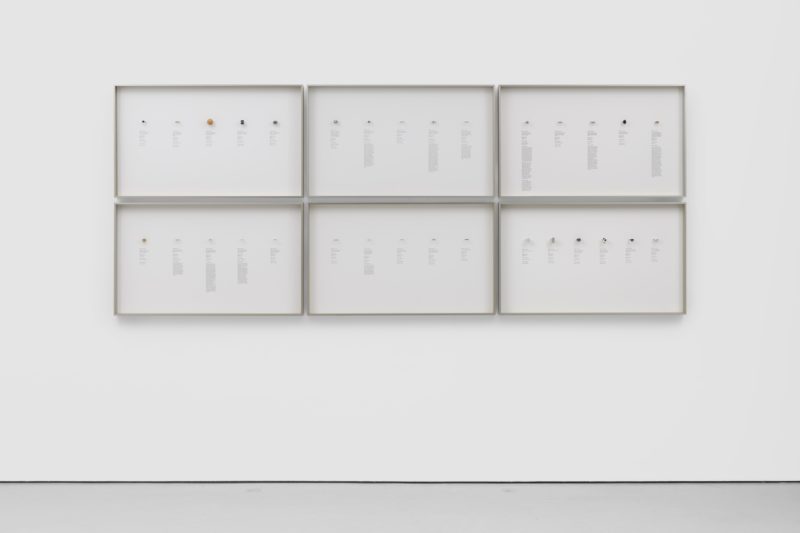Rose Salane – The project [that premiered at the Whitney Biennial 2022: Quiet as it’s Kept] has been a long-term investigation, a very physical, haptic process of sifting through 64,000 coins that I bought at an MTA transit auction. The lot of coins was referred to by the agency as ‘slugs,’ which are counterfeit currencies that are used to trick coin-operated devices. However this surplus I received contained a variety of coin-like objects ranging from arcade and casino tokens, to restroom and car wash tokens, as well as religious keepsakes, pendants and batteries. All these items had been used by NYC commuters as bus fare payment from 2017 to 2019. I sat with this collection for two years after purchasing it until I came to understand the random patterns that formed the internal logic. Each coin traces a possible history; it could be a remnant from a major experience or a forgotten occurrence. I’ve identified five categories: Faith, Place, Chance, Imitation, and Blank. Every coin can fit into one of these categories. I am interested in the tokens’ ripple effect, speculating as to the amount of time an individual held onto the ‘slug’ and the multiple spaces the person passed through with this object.
Samantha Ozer – What types of objects were used as coins?
There were thousands of Chuck E. Cheese tokens from the ‘80s all the way up until 2015; the designs and mouse faces change with time, but the slogan, “Where A Kid Can Be A Kid,” always remains. There are religious prayer tokens, counterfeit US quarters, play money and small pieces of hardware-like washers. There are these amazing coins from Peepland and Show World Center which are from the era of peep shows and sex theaters in Times Square which I put in the ‘Place’ category. I’m currently reading Samuel R. Delany’s Times Square Red, Times Square Blue (1999) which tells the history of the porn theaters where many of these objects served as currency. The book is presented as a piece of auto-fiction, in which Delany zooms into the theater’s seats as a dynamic site of negotiations for intimacy in public. He offers insight into the ways Times Square served as an experimental sphere of contact for the gay community across class divides in the 1960s until the decline of the theaters in the early 1990s due to gentrification and heteronormative whitewashing of the area. Social and urban transformations such as this are documented and stored within the five piles on view. In a sense, this collection of coins moves so far out from these moments and places described in the book, they all become particles within a packed constellation of values and transactions. The five categories make up a communal body and signal the desires of the society, while tricking services that require legal tender.
As the MTA will continue to collect and auction these coins every few years, these objects remain in a cycle, a living archive. For this installation, I’m taking the opportunity to talk about a specific point of time in New York. In any work, I like to look at a time frame and think about what was saved, what changed and what forms of resilience and desires remain constant. If it’s 2020-2022, or even a few years from now, or if some form of this collection were to resurface, it wouldn’t be the same. And that goes for the way we consider and relate to time and process experiences before technology steps in and facilitates those experiences for us. In many ways the project is boundless in that it shows thousands of possibilities for different memories and values through the movement of these objects.
In terms of technology, I’m reminded of your 2019 exhibition at MIT List Projects1. In thinking about society’s increasing shift towards the digital and automation, even in the instance of the MTA making moves towards cashlessness, what is the role of the object today?
It goes back to a form of tactility that I think defines technology through contrast, to some degree. While technology can be more widespread, global, limitless, especially in terms of communication, there is a local power in objects. Objects become anchors for moments in time to stop. They become prisms for me to consider how and what was going on at specific moments. With the MIT project, I was able to glimpse into a site that is no longer available, because a librarian saved and transcribed the entire former Port Authority’s library contents from a floppy disk. The information was held in a list form of titles and call numbers. There was enough information for me to locate the books once present, and assemble a physical view, despite the archive being constructed over 30 years ago. Objects and their movements become access points or pinholes and ways for me to approach things I was not always available or alive for. In terms of technology’s role today, of course it lends itself to great fast advancements of working and connecting. Yet each digital platform or social network is still just a reflection/matrix of desires, views, promotions and setbacks that originate and can be located again in the physical.
I’m curious about the fantastical reality aspect of this work where a viewer can construct a fiction about the potential user of each coin with very little information provided by you versus in Panorama 94 (2019) where you provided a biological, spiritual, and financial profile on each potential ring owner of rings that were lost in the MTA?
A lot of the objects I’m drawn to are often assembled by the public’s daily movements. Sometimes they get caught in some civic infrastructure where they are sold or are collected through an individual’s routines and rituals. The ones I work with usually reflect the humanity of everyday events. This allows me to work in both speculation and non-fiction. Each set of objects has different circumstances, the rings for example were these glimmering lights of power that were still powered on, even though they had been lost. Individually their uniqueness and subsequent collectivity led to so many histories being wrapped around questions of value: value that presents itself monetarily, scientifically, or spiritually. The formal aspects of how the work is presented comes from trying to allow the viewer to meditate on the object in the same way that I have. And maybe the formalism is also this form of realism too; when I went to the MTA agency to view the coins before bidding on the auction I was standing with other interested bidders around a table looking at a pile of the slug tokens. I decided to present the coins as masses, in piles, separated through their categories alongside long ledgers of the text that appeared on the front and back of each coin. I wanted to reflect on the qualitative and quantitative ways of how an individual views and moves through a city, and how a city impacts that individual. Usually the question for an artist is how can I make this do something that it wasn’t doing before? However, with this collection, the trickiness is that it’s already doing so much. I have to let them talk.
